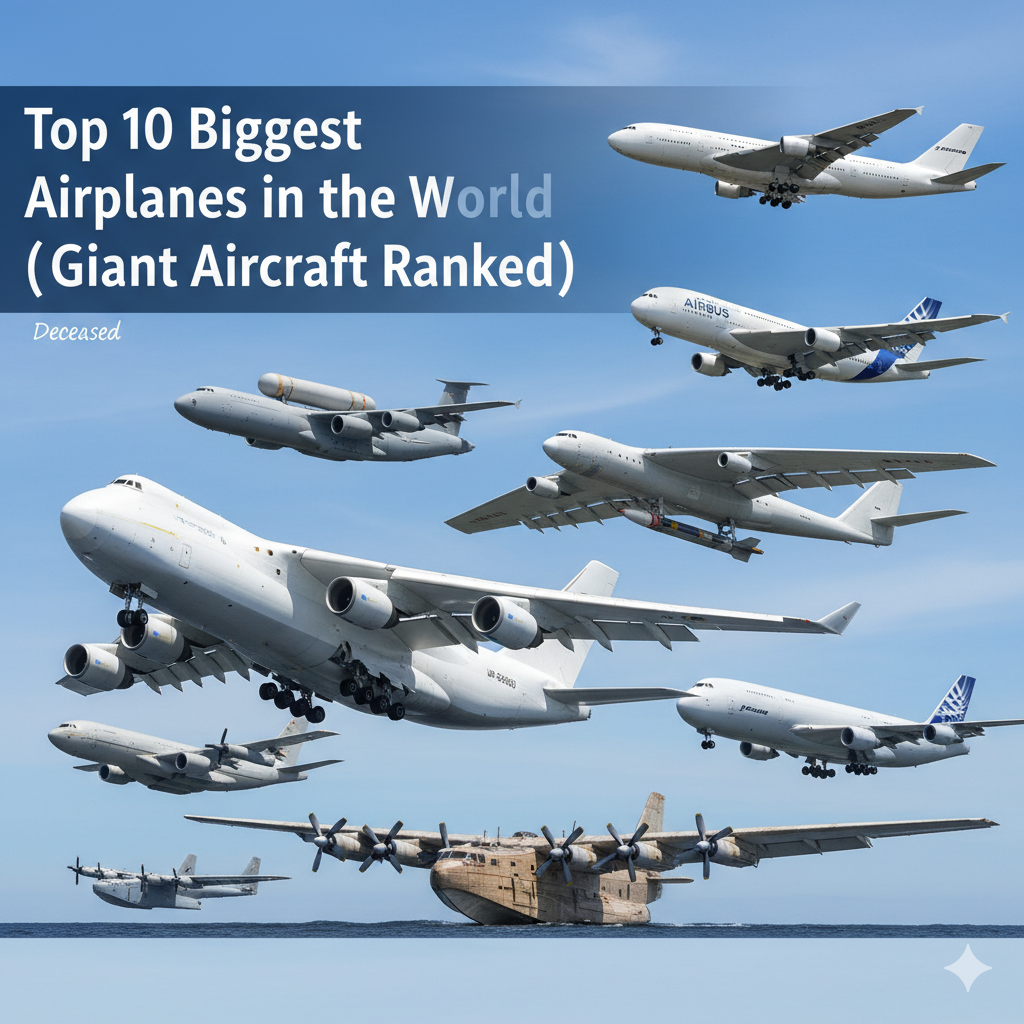In the realm of aviation, size often dictates capability. From gargantuan cargo lifters that transport entire train locomotives to colossal passenger jets designed to carry hundreds of travelers across continents, the engineering behind the world’s biggest airplanes is nothing short of astounding.
These airborne giants push the boundaries of aerodynamics, thrust, and structural integrity. They are marvels of human ingenuity, designed for specific, often extraordinary, missions.
We’ve compiled a list of the top 10 biggest airplanes in the world, focusing on key metrics like wingspan, length, height, and maximum takeoff weight (MTOW). Prepare to be amazed by these titans of the sky!
10. Boeing 747-8 Intercontinental (Passenger)
The iconic “Queen of the Skies” is still flying high, with the 747-8 variant being the longest passenger aircraft in the world. While passenger aviation increasingly moves towards twin-engine efficiency, the four-engine 747-8 remains a beloved workhorse, especially for long-haul routes. It’s not just long; it’s a testament to enduring design.
- Role: Long-range passenger transport
- Manufacturer: Boeing (USA)
- First Flight: February 2010 (passenger version)
- Key Specs:
- Length: 76.3 m (250 ft 2 in)
- Wingspan: 68.4 m (224 ft 7 in)
- MTOW: 447,700 kg (987,000 lb)
- Typical Seating: 410-581 passengers
9. Boeing 747-400 Large Cargo Freighter (LCF) “Dreamlifter”

When Boeing needed to transport large components for its 787 Dreamliner from suppliers around the world to its assembly plants, a regular cargo plane just wouldn’t cut it. Their solution? Convert 747-400s into the ungainly but incredibly efficient Dreamlifter. Its massive, expandable fuselage can swallow entire fuselage sections and wings, making it a crucial part of modern aircraft manufacturing.
- Role: Outsize cargo transport (specifically aircraft parts)
- Manufacturer: Boeing (USA)
- First Flight: September 2006
- Key Specs:
- Length: 71.68 m (235 ft 2 in)
- Wingspan: 64.4 m (211 ft 5 in)
- MTOW: 364,235 kg (803,000 lb)
- Cargo Volume: 1,840 m³ (65,000 cu ft) – largest in the world
8. Lockheed C-5 Galaxy
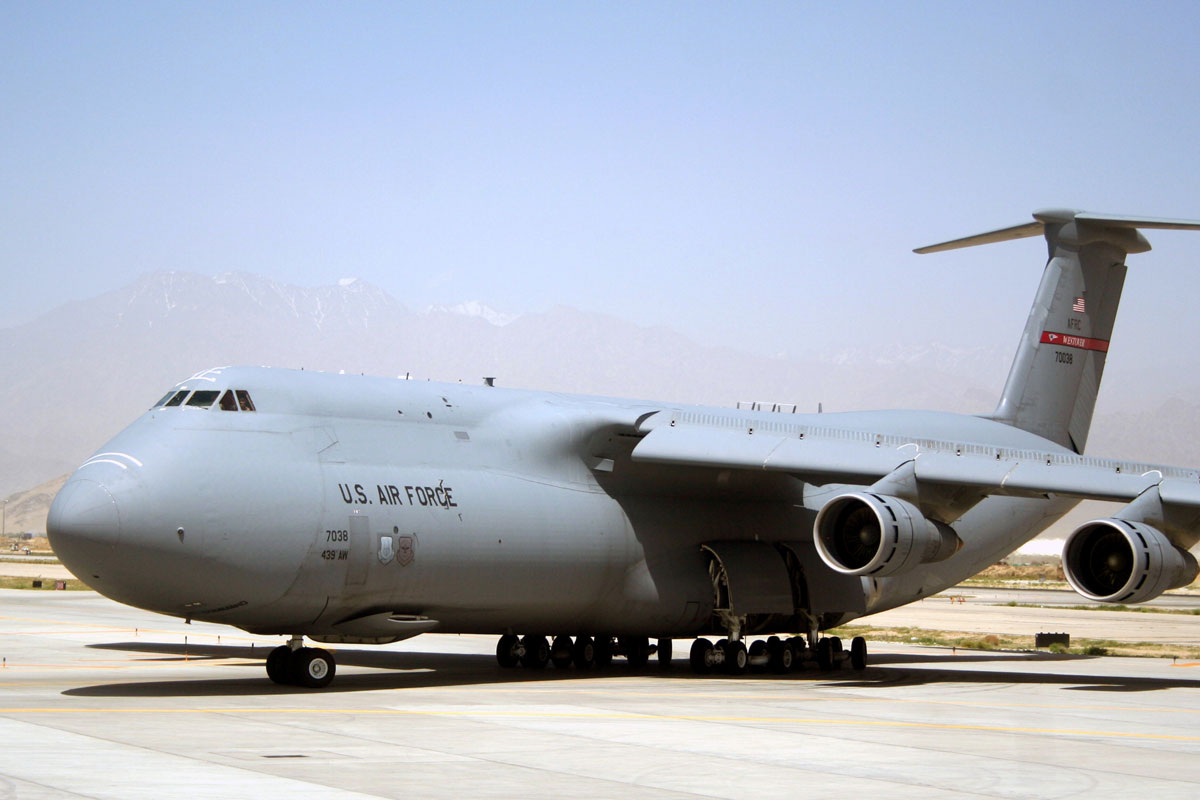
A cornerstone of the United States Air Force’s strategic airlift capability, the C-5 Galaxy is designed to transport massive amounts of cargo, including tanks, helicopters, and other oversized equipment, anywhere in the world. Its ability to take off and land on relatively short runways, combined with its enormous payload capacity, makes it an invaluable asset for military operations and humanitarian aid.
- Role: Heavy military strategic airlift
- Manufacturer: Lockheed (USA)
- First Flight: June 1968
- Key Specs:
- Length: 75.31 m (247 ft 1 in)
- Wingspan: 67.89 m (222 ft 9 in)
- MTOW: 381,000 kg (840,000 lb)
- Payload Capacity: 122,470 kg (270,000 lb)
7. Airbus A380 “Superjumbo”
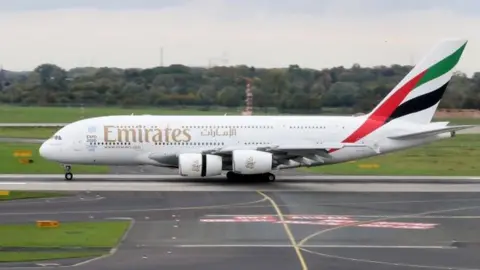
The Airbus A380 redefined passenger capacity. The largest passenger airliner ever built, its full double-deck configuration allows it to carry hundreds of passengers in unparalleled comfort. While production has ceased, the A380 remains a popular choice for high-density routes, offering a spacious and relatively quiet flying experience that few other aircraft can match.
- Role: Ultra-high capacity, long-range passenger transport
- Manufacturer: Airbus (Europe)
- First Flight: April 2005
- Key Specs:
- Length: 72.72 m (238 ft 7 in)
- Wingspan: 79.75 m (261 ft 8 in)
- MTOW: 575,000 kg (1,268,000 lb)
- Typical Seating: 500-853 passengers
6. Antonov An-22 “Antei”

The An-22 “Antei” holds the distinction of being the world’s largest turboprop-powered aircraft. This Soviet-era behemoth was designed for heavy strategic airlift, capable of operating from unprepared airfields thanks to its robust landing gear and powerful Kuznetsov NK-12 turboprops. Even today, a few An-22s remain in service, a testament to their rugged design.
- Role: Heavy military/civilian strategic airlift
- Manufacturer: Antonov (Soviet Union/Ukraine)
- First Flight: February 1965
- Key Specs:
- Length: 58.7 m (192 ft 7 in)
- Wingspan: 64.4 m (211 ft 3 in)
- MTOW: 250,000 kg (551,155 lb)
- Payload Capacity: 80,000 kg (176,370 lb)
5. Myasishchev VM-T “Atlant”
This incredibly specialized Soviet transport aircraft was born out of necessity – to carry oversized components of the Buran space shuttle and Energia rocket boosters. Based on the M-4 “Bison” bomber, the VM-T Atlant featured a significantly modified fuselage and a unique, colossal external cargo carrying capability. Only two were ever built, making them truly rare birds.
- Role: Outsize cargo transport (space program components)
- Manufacturer: Myasishchev (Soviet Union)
- First Flight: 1981 (modified)
- Key Specs:
- Length: 51.3 m (168 ft 3 in)
- Wingspan: 53.05 m (174 ft 1 in)
- MTOW: 210,000 kg (462,971 lb)
- Unique Feature: Designed to carry massive payloads externally on its back.
4. Antonov An-124 “Ruslan”

Antonov An-124 Ruslan cargo aircraft on a runway
The An-124 “Ruslan” is a cornerstone of global heavy airlift. For decades, it was the largest production cargo aircraft in the world, capable of transporting enormous and unusual loads, from industrial machinery to humanitarian aid, to almost any corner of the globe. Its unique kneeling capability, allowing the fuselage to lower, facilitates easier loading of oversized cargo.
- Role: Heavy strategic airlift (military and civilian)
- Manufacturer: Antonov (Soviet Union/Ukraine)
- First Flight: December 1982
- Key Specs:
- Length: 68.96 m (226 ft 3 in)
- Wingspan: 73.3 m (240 ft 6 in)
- MTOW: 402,000 kg (886,285 lb)
- Payload Capacity: 150,000 kg (330,000 lb)
3. Stratolaunch Roc
With the largest wingspan of any aircraft ever built, the Stratolaunch Roc is an absolute behemoth. It was conceived as an air-launch platform for orbital rockets, offering a flexible alternative to traditional ground launches. Its unique twin-fuselage design and six powerful jet engines make it a truly unique sight, pushing the limits of aircraft design.
- Role: Air-launch platform for orbital vehicles
- Manufacturer: Scaled Composites / Stratolaunch Systems (USA)
- First Flight: April 2019
- Key Specs:
- Wingspan: 117 m (385 ft) – Largest in the world
- Length: 73 m (239 ft)
- MTOW: 590,000 kg (1,300,000 lb)
- Unique Feature: Twin fuselage design with six Boeing 747 engines.
2. Hughes H-4 Hercules “Spruce Goose”
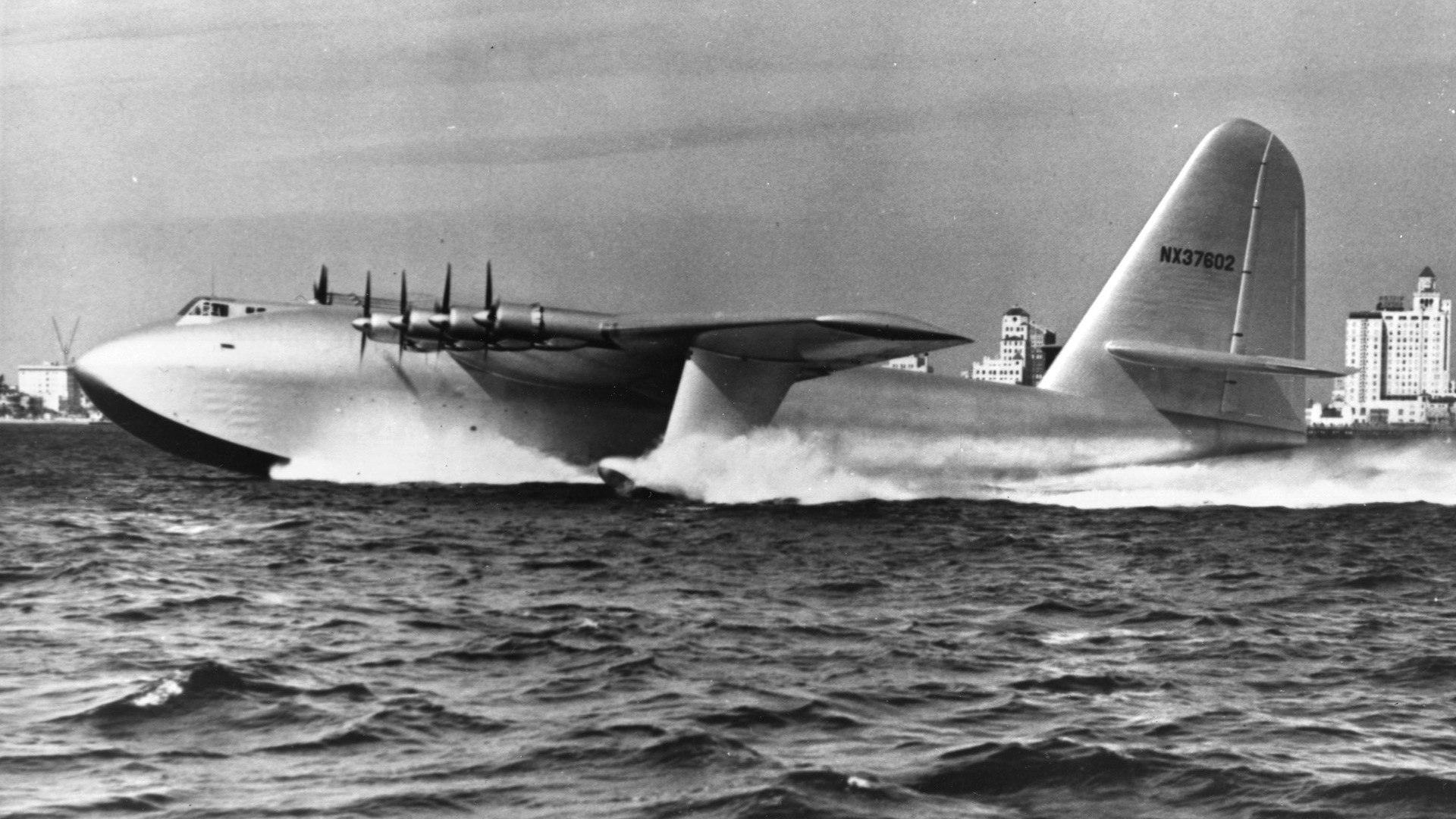
A legend in aviation history, the “Spruce Goose” (officially the H-4 Hercules) was designed and built by Howard Hughes during World War II to transport troops and equipment across the Atlantic, safe from U-boats. Made almost entirely of wood due to wartime restrictions on aluminum, it only ever flew once, for a mere 26 seconds. Despite its brief flight, its sheer size and ambition secure its place in history.
- Role: Prototype heavy transport flying boat
- Manufacturer: Hughes Aircraft (USA)
- First Flight: November 1947
- Key Specs:
- Wingspan: 97.54 m (320 ft) – Largest by wingspan until Stratolaunch
- Length: 66.65 m (218 ft 8 in)
- MTOW: 180,000 kg (400,000 lb)
- Unique Feature: Constructed almost entirely of birch wood; single flight.
1. Antonov An-225 “Mriya” (Dream) – Deceased
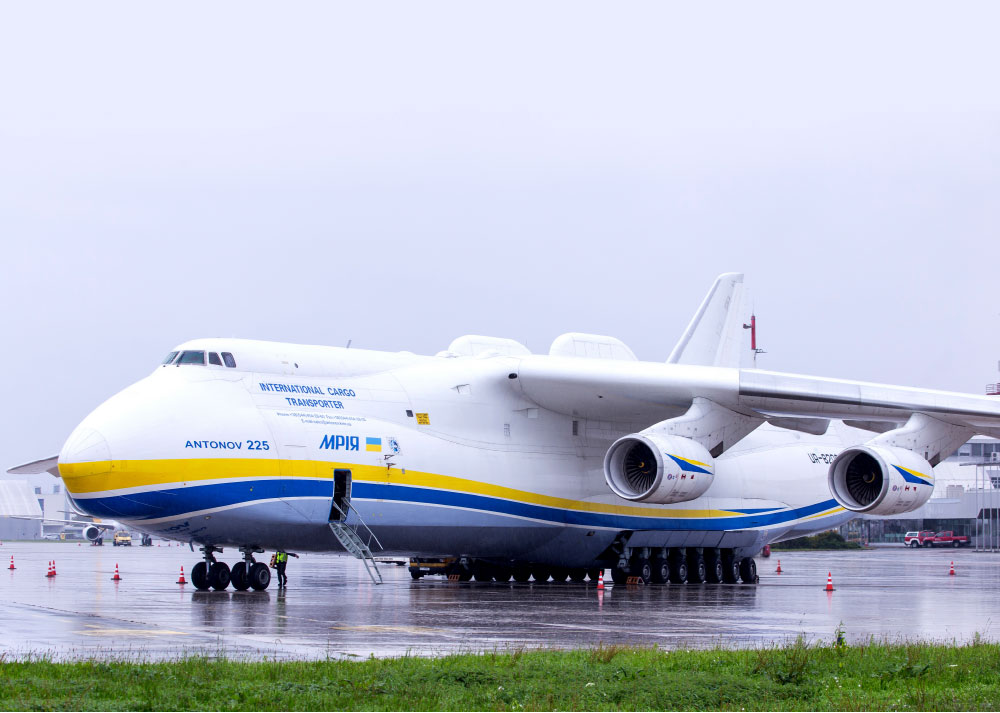
The undisputed king of the skies, the Antonov An-225 “Mriya” (Ukrainian for “Dream”) was, for decades, the world’s heaviest and largest aircraft. This six-engine behemoth was initially designed to transport the Buran space shuttle and later served as an unparalleled commercial heavy-lift cargo plane. Its destruction during the 2022 Russian invasion of Ukraine was a tragic loss for aviation enthusiasts and the global logistics industry. While a second airframe was never completed, its legacy as the ultimate air giant remains.
- Role: Super heavy strategic airlift (space program, outsize cargo)
- Manufacturer: Antonov (Soviet Union/Ukraine)
- First Flight: December 1988
- Key Specs:
- Length: 84 m (275 ft 7 in) – Longest in the world
- Wingspan: 88.4 m (290 ft 0 in)
- MTOW: 640,000 kg (1,411,000 lb) – Heaviest in the world
- Payload Capacity: 250,000 kg (550,000 lb) internally, 200,000 kg (440,000 lb) externally.
The Sky’s Limit for Engineering
These incredible aircraft represent the pinnacle of aerospace engineering, each designed to solve unique challenges and transport the unimaginable. While some, like the An-225, are now gone, their impact on aviation history and their sheer scale continue to inspire awe.
Which of these airborne giants impresses you the most? Share your thoughts in the comments below!

